By Russ Ouellette
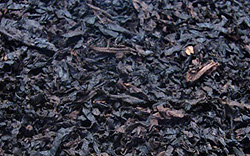 In the last go-round, I blathered on about one of my favorite tobaccos-Perique. This time, I’m going to address my first pipe related love, Latakia. When I was small enough that I could just reach the top of the end table in the living room, I fell in love with Latakia because Dad would leave the knife-lid can on it, and when he wasn’t around I would open the can and smell it for what seemed like hours. He smoked a Burley-based mixture with Virginia, Latakia and Deertongue. It smelled great in the can, and even better when he lit up. The campfire smokiness of the Latakia made me wish we were at the lake. That rustic, comforting aroma captivated me then, and still does today.
In the last go-round, I blathered on about one of my favorite tobaccos-Perique. This time, I’m going to address my first pipe related love, Latakia. When I was small enough that I could just reach the top of the end table in the living room, I fell in love with Latakia because Dad would leave the knife-lid can on it, and when he wasn’t around I would open the can and smell it for what seemed like hours. He smoked a Burley-based mixture with Virginia, Latakia and Deertongue. It smelled great in the can, and even better when he lit up. The campfire smokiness of the Latakia made me wish we were at the lake. That rustic, comforting aroma captivated me then, and still does today.
Latakia is considered a condimental tobacco, and it adds a rich smoky note, sometimes accompanied by hints of leather and even a touch of anise. Due to the powerful flavor and aroma, a little can go a long way. But unlike some condiments for food, it’s hard to overdo the Latakia content. If you add too much hot sauce to a dish, it’s almost impossible to tame it down. Add too much salt and the meal is ruined. But if you add too much Latakia, you’ll just wind up with a deep, heavy "beef jerky" flavor that is easy on the tongue, but will become a little too monochromatic.
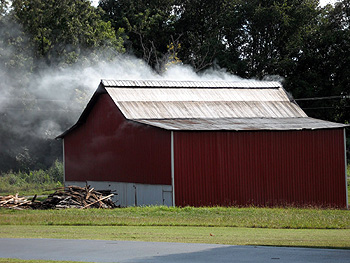 Latakia is not, strictly, a tobacco, but a process. There is no strain of tobacco called Latakia; it doesn’t get that name until it has gone through an involved curing procedure. There are two primary varieties of Latakia- Syrian and Cyprian. The Syrian version is made using an Oriental varietal called Shek-al-Bint (var.), whereas the Cyprian type is made from another Oriental called Smyrna. Although most Latakiaphiles seem to prefer Syrian Latakia, there are many who like Cyprian. Syrian has a more pronounced smokiness with a wine-like character, I find that Cyprian is more aromatic, which makes for interesting blends when using tobaccos like Yenidje, Basma and Xanthia, as they tend to amplify the aroma and flavor of the Cyprian to the point where it begins to smell like incense, which I always loved about tobaccos like Bengal Slices.
Latakia is not, strictly, a tobacco, but a process. There is no strain of tobacco called Latakia; it doesn’t get that name until it has gone through an involved curing procedure. There are two primary varieties of Latakia- Syrian and Cyprian. The Syrian version is made using an Oriental varietal called Shek-al-Bint (var.), whereas the Cyprian type is made from another Oriental called Smyrna. Although most Latakiaphiles seem to prefer Syrian Latakia, there are many who like Cyprian. Syrian has a more pronounced smokiness with a wine-like character, I find that Cyprian is more aromatic, which makes for interesting blends when using tobaccos like Yenidje, Basma and Xanthia, as they tend to amplify the aroma and flavor of the Cyprian to the point where it begins to smell like incense, which I always loved about tobaccos like Bengal Slices.
Both strains are made in the same way, in that the leaves are hung in a structure with an open fire. The smoke eventually saturates the leaf and turns it black. The base leaf of Syrian is a bit lighter in flavor and is more delicate than the Smyrna used in Cyprus, but it works well as the Syrian Oak delivers a more subtle taste in flavoring the leaf. The Oak smoke would get a bit lost with the muskiness of Smyrna. However, when combined with the pine/balsam character of the Cyprian process, the Smyrna just makes it richer and warmer.
 Unfortunately, there has been a lot of inconsistency with Syrian Latakia. It started around 20 years ago when the Syrian government forbade the harvesting of Syrian Oak due to severe deforestation. Without the needed wood, the Latakia industry faded away. After around a dozen years, enough new growth cropped up to the point where Syria began to allow a limited amount of Latakia to be made. One problem, however, is that a number of the experienced processors had found other work. The tobacco produced by the people with a history has tended to be good to excellent quality, whereas some of the Latakia turned out by other makers has been inconsistent at best. I was sent a sample about a year and a half ago by someone who told me that I could get a few hundred pounds at a fair price. When I received the sample, I was horribly disappointed. Even from ounce-to-ounce there were inconsistencies. I’m sure things will improve in this regard, but I doubt that the supply will anytime soon, as they’ll have to be careful not to over harvest the Oak.
Unfortunately, there has been a lot of inconsistency with Syrian Latakia. It started around 20 years ago when the Syrian government forbade the harvesting of Syrian Oak due to severe deforestation. Without the needed wood, the Latakia industry faded away. After around a dozen years, enough new growth cropped up to the point where Syria began to allow a limited amount of Latakia to be made. One problem, however, is that a number of the experienced processors had found other work. The tobacco produced by the people with a history has tended to be good to excellent quality, whereas some of the Latakia turned out by other makers has been inconsistent at best. I was sent a sample about a year and a half ago by someone who told me that I could get a few hundred pounds at a fair price. When I received the sample, I was horribly disappointed. Even from ounce-to-ounce there were inconsistencies. I’m sure things will improve in this regard, but I doubt that the supply will anytime soon, as they’ll have to be careful not to over harvest the Oak.
Even though I’m working strictly with Cyprian, I’m not disappointed. I actually prefer the more aromatic quality. And Latakia shares a trait with Perique in that it seems to change depending upon what it’s combined with. With Virginias, it becomes the stately smoke that most of us are familiar with. Once Orientals come into play, the dark leaf takes on new characteristics, becoming deep and almost musty or bright, sweet and spicy or maybe even a bit floral. Burleys tend to combine with Latakia to make for a deep, warm and nutty blend. Adding a bit to some aromatics adds a depth of flavor not normally associated with a topped tobacco, and there seems to be an amazing synergy between Latakia and Perique as they seem to compliment each other- smoky, earthy and leathery versus sweet, fruity and tangy- as is evidenced by such great tobaccos as Dunhill’s venerable Nightcap.
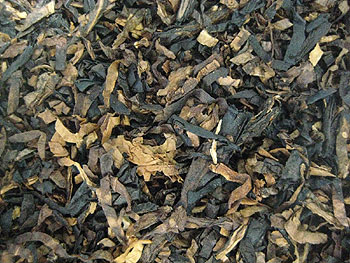 Although I’ve already addressed this before, let me clear up one popular misconception- camel dung is not used in the making of Latakia. As I have mentioned, dung is used by people around the world as heating fuel, not just camel dung in the Middle East, but buffalo chips were used by native Americans for the same purpose. Latakia is made in the region where camel dung is used for heat, and it does take a fire to process the leaf, but it’s a wood fire, not a pyre of poop, that gives the tobacco its flavor.
Although I’ve already addressed this before, let me clear up one popular misconception- camel dung is not used in the making of Latakia. As I have mentioned, dung is used by people around the world as heating fuel, not just camel dung in the Middle East, but buffalo chips were used by native Americans for the same purpose. Latakia is made in the region where camel dung is used for heat, and it does take a fire to process the leaf, but it’s a wood fire, not a pyre of poop, that gives the tobacco its flavor.
Few things trigger memories like smells, and since Latakia has an aroma that is at the same time familiar and unique, it’s easy to bring back a flood of temps perdu with the first few puffs. Over half of my Hearth & Home tobaccos contain Latakia, and I still feel that there are things I’d like to try to accomplish with it. My most recent blend featuring Latakia is our Marquee Series’ Magnum Opus. Since I was able to get some Yenidje, Basma and excellent yellow Virginias, I was able to make a blend unlike anything I’ve been able to for many years. The aroma and taste of this new blend transports me back to remind me of old friends. And if there’s one thing a good companion does, it’s to help you recall the best of times.
|
Russ Ouellette is the blender/creator of the Hearth & Home series of tobaccos for Habana Premium Cigar Shoppe and www.pipesandcigars.com in Albany, NY. He has been a pipe smoker and blender for over 30 years, and enjoys feedback from the pipe smoking public. You can reach Russ at russo@pipesandcigars.com or by calling 1-800-494-9144 on Monday, Wednesday and Thursday from 9 am to 5 pm and Friday from 1 pm to 5 pm. |




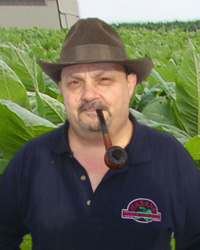

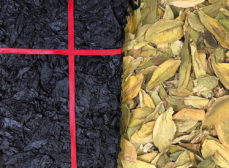
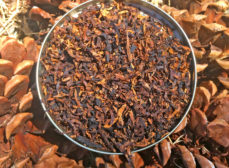











Thanks for another informative article! I especially appreciate learning the differences between the two Latakias as well as the cause for the shortage of the Syrian variety.
Great information about one of my favorite condiment tobaccos. The addition of some nice smoky Latakia is wonderful. If it dominates a blend though I find it can become overpowering and uninteresting . Another finc article Russ.
I ducked into a smoking shelter near PSU today; don’t usually do that. I was smoking a bowl of Aylesbury Latakia blend in my Kaywoodie Yacht and immediately one of the people in the shelter asked where the campfire was.
I told him it was in the pipe, and another guy who happened to know tobaccos and I fell into a discussion.
Latakia is a delight, though I prefer the smokier-latakia to the Cyprian stuff, personally.
Thanks for a good article.
Thanks for a very informative article Russ!
Great and interesting read not to mention informative.
Even though I cannot personally pallate Latakia with so much as a grin on my face ( I truely wish I could), I sure appreciate learning how it’s processed into what it is today.
Nice article, Russ. Compliments the one on perique nicely. Maybe you could finish the “misunderstood tobacco-that-isn’t-really-a-type-of-tobacco” triumvirate and talk about Cavendish!
I’m not a big latakia smoker, but I do have an unopened tin of Mac Baren HH Syrian in my stash that I’m really tempted to crack the seal on now.
Simon
I had a few ideas for upcoming articles, but the suggestion to write about Cavendish makes perfect sense, and fits right in with the last two. There’s certainly enough material for an article, there, and I can clarify some of the inaccurate concepts about Cavendish. Thanks for the idea!
Russ
Heck of an article really informative.I enjoy both aromatics and english but tilt more to aros.I started out not realy liking latakia blends but the more I enjoy my pipes the more it appeals to me.Just not on an empty stomach please.Its gotten to the point where I find myself enjoying BillyBud more and more and I didnt even like it at first but didnt want to waste the tin.I would very much like to try the Deertongue blend can you tell me what it was?And I dont know why but I took to Perique immediately and enjoy the heck out of it.BTW that article was very good as well.
Bob
Bob, the deertongue blend was from a local shop that closed in the 90s, but I made what I consider a pretty faithful recreation called Old Tartan. We’ve had to replace deertongue with an analog flavoring which, aroma and taste-wise, is virtually identical. It’s a neat old-style blend that you can find here: http://pipesandcigars.com/oldtartan.html
Russ
Thanks Russ ,Ill order some up with some more Anniversary Kake.I realy like that.I tried your Egg Nog and realy realy wanted to like it.It smelled grweat.But the taste wasnt satisfactory to me.But Ive been wanting to try it again and give it another try.
Bob
Good edumacation Russ! The first blend with Latakia I tried was MM 965 some 15 years ago. I liked it immediately, then Murray began degenerating their respectable reputation.
Over the years my affectation for this condiment has waxed and waned. The moon of Latakia is definitely waxing strong for me presently. I’m just about ready to crack open a tin of Magnum Opus.
Here’s hopes for healthy and abundant forests of Syrian oak!
Another great educational article Russ!
> We’ve had to replace deertongue with an analog flavoring
>
Why the substitution? My local tobacconist used to have a deertongue blend that was very good and he told me that he has not been able to find any more deertongue. Is this just a matter of the market getting too small to support production or some other problem?
The reason for using the replacement flavoring is that I was informed that deertongue was no longer considered a proper flavoring by the FDA. I still had a source for the product, but even if the rule isn’t hard and fast (I never saw any documentation), we didn’t want to take the chance, especially since the analog is so similar in flavor and aroma.
Russ
Thanks for the great info!
Latakia is my fave leaf. Thx Russ!